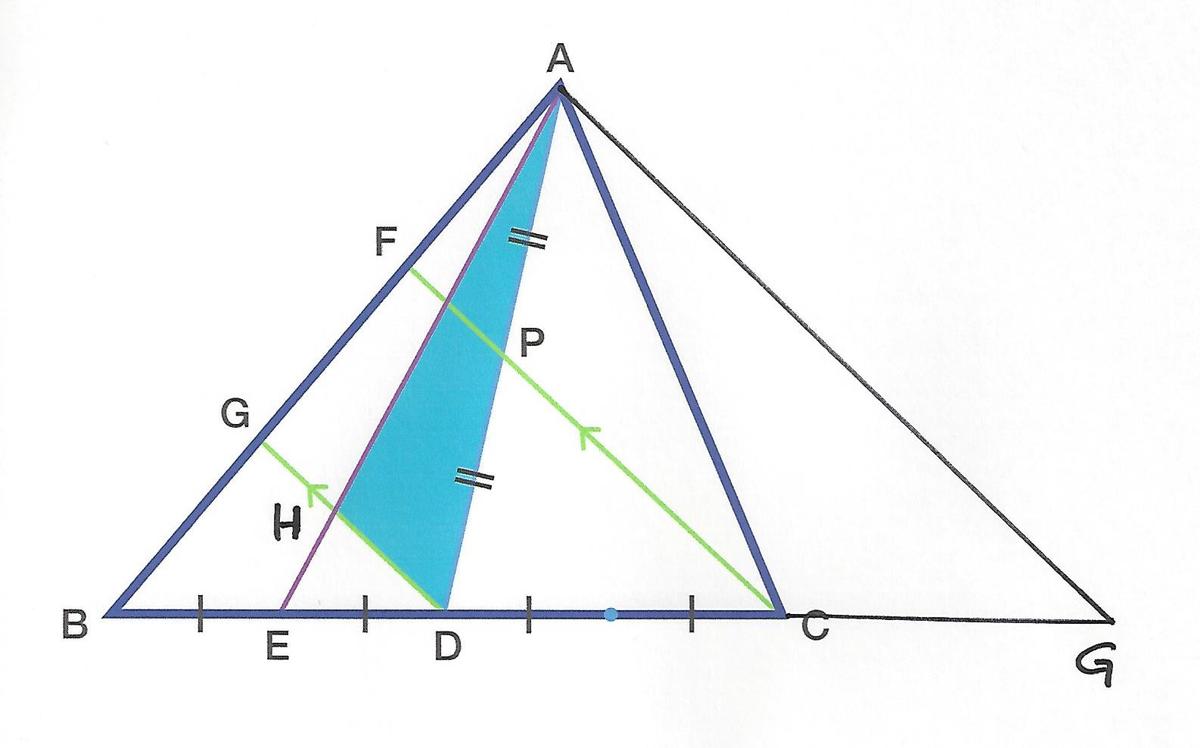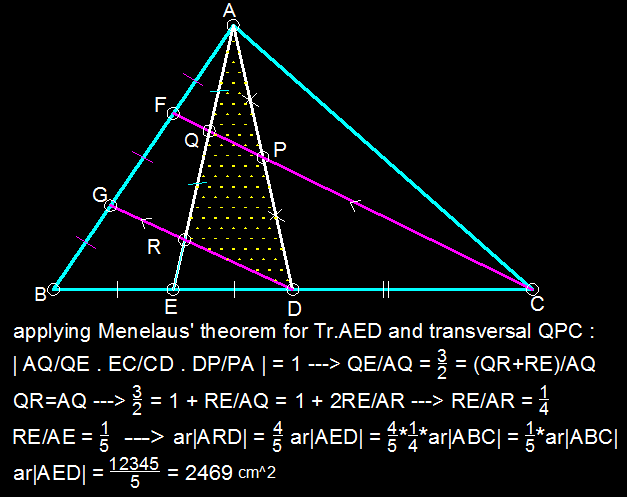Triangular Madness
Given the following:
- ∣ Δ ( A B C ) ∣ = 1 2 3 4 5
- B D = D C , B E = E D , A P = P D
- G D ∥ F C ,
find the area of the shaded region.
The answer is 2469.
This section requires Javascript.
You are seeing this because something didn't load right. We suggest you, (a) try
refreshing the page, (b) enabling javascript if it is disabled on your browser and,
finally, (c)
loading the
non-javascript version of this page
. We're sorry about the hassle.
3 solutions
Nice page but there is a problem in your solution you have repeated one step two times. Have a close look
Log in to reply
i know GD || FC i have purposely done that so that i don't have to direct the reader back to the same statement

Extend line E C to line E G such that D C = C G , and draw line A G . Then triangle E D H is similar to triangle E G A , but in proportion of E D : E G = 1 : 5 . Hence, the altitude of triangle E D H is 5 1 of altitude of triangle E G A . Given that the area of triangle E D A is 4 1 of triangle B C A , and that the area of triangle D A H is 1 − 5 1 = 5 4 of triangle E D A , the area of triangle D A H is 4 1 ⋅ 5 4 = 5 1 of triangle B G A , so that the area is 5 1 ⋅ 1 2 3 4 5 = 2 4 6 9 .

Let X be the point of intersection of the straight lnies A E adnd G D .
Let Y be the point of intersection of the straight lnies A E adnd F C .
A P = P D and F C ∥ G D . By midpoint theorem, A Y = X Y and A Y + X Y = A X = 2 X Y .
B D B E ∴ D C E D = = = 2 B C = D C E D = 4 B C 2 1
G D ∥ F C , so by basic proportionality theorem,
D C E D 2 1 2 X Y E X A X E X = = = = X Y E X = X Y E X 4 1 4 1
A ( △ A X D ) A ( △ X E D ) = 4 1
Applying componendo
A ( △ ( A X D ) A ( △ A E D ) = 4 5 4 ⋅ A ( △ ( A X D ) A ( △ A B C ) = 4 5 A ( △ ( A X D ) A ( △ A B C ) = 5 A ( △ ( A X D ) = 5 A ( △ A B C ) = 5 1 2 3 4 5 = 2 4 6 9 .